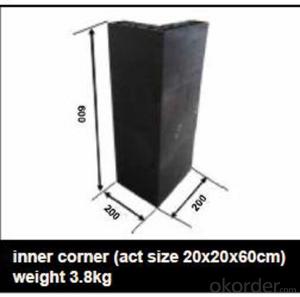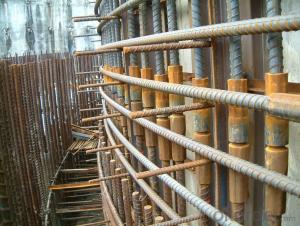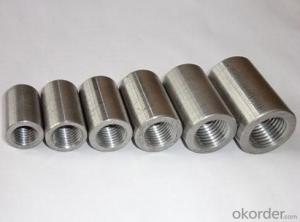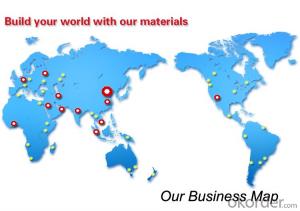Galvanized Iron Scaffolding Pipes Formwork Scaffolding Pipe Parts with Low Price
- Loading Port:
- Tianjin
- Payment Terms:
- TT OR LC
- Min Order Qty:
- 8000 set
- Supply Capability:
- 50000 set/month
OKorder Service Pledge
OKorder Financial Service
You Might Also Like
Galvanized Iron Scaffolding Pipes Formwork Scaffolding Pipe Parts with Low Price
Plastic Formwork Concrete Formwork Circular Column Used Scaffolding Props New Design
Developing with new technology materials, steel formworks is no longer a must in construction concrete process. More and more buildings are established with plastic formworks. And workers love this new formworks much more.
The advantages of plastic formworks:
1.First of all--light
Yes it is the first advantage of plastic formwork. It wins the great praise of both contractors and workers.
The biggest panel is 120×1500px,weights 10.5kg only. It can be lift and set up by one person easily, which means there is no need for cranes on site.Saves a lot of cost and time.
2.Easy set up
Different size of panels can firmly locked by simply turn the special handles to 90 degree. The Panels has rib on the back, which makes the system need not traditional wood blocks and nails. The panels have holes to fit tie rod, guarantee the strength of the whole system.
3.Modularity
Modular formworks composed by different size of panels..
4.Strength
The handles are made by high strength Nilon, each panel locked by at least 4 handles, which makes the whole system strong enough to pour 1000px walls.
5.Environment friendly
The system needs no cut and nail due to the variety size. Also it needs nearly no wood. The material can be recycled after broken, so it will not pollute the environment.
6.Consequent
Concrete does not stick to plastic formwork, thus the panels need no oil before using, and can be cleaned simply by water. The surface of the wall which build by modular formwork is smooth and without rework.
Galvanized Iron Scaffolding Pipes Formwork Scaffolding Pipe Parts with Low Price
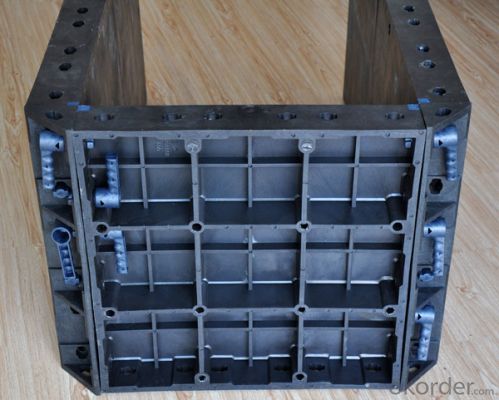
Galvanized Iron Scaffolding Pipes Formwork Scaffolding Pipe Parts with Low Price

Advantage
* Good loading capacity
* Easy to assemble and dismantle
* Stable and durable thanks to its structual design & automatic welding quality
* Customized solution helps you work safe, save cost and convenient
* Excellent quality for formwork & scaffolding with wide choices
Packing
in bulk or in bundle, or as requested
Shipping
15-20 Days.
Normally small orders, it needs just 15-20 business days to the port. For goods with stock, it would be even shoter.
Galvanized Iron Scaffolding Pipes Formwork Scaffolding Pipe Parts with Low Price
Other scaffolding & formwork products:
(1) Scaffolding System:
Including Ringlock Scaffolding System and accessories; Cuplock Scaffolding System and accessories; Kwikstage Scaffolding System and accessories; Haki Scaffolding System and accessories;
(2) Scaffolding Frame & Accessories:
Including Walk Through Frame Scaffolding; Ladder Frame Scaffolding; Accessories; we also can make scaffolding according to your samples or drawings.
(3) Scaffolding Couplers/Clamps:
We can produce all kinds of forged and pressed couplers, including British type couplers, American type couplers, German type couplers, Italian type couplers ,fence couplers, BRC coplers and so on. We also can produce according to your drawings or samples.
FAQ
Why Us? Galvanized Iron Scaffolding Pipes Formwork Scaffolding Pipe Parts with Low Price
We are one of the Top 500 in the world, largest construction materials supplier in China. Also we are a state-owned company and respond to every customer with large and also small orders.
We own professional manufacturers with powerful producing capacity.
Extensive and comprehensive quality control system
Excellent products with competitive prices.
Efficient services in pre and after sale.
Full energy with affluent experience team.
- Q: Can steel frame formwork be used for high-temperature industrial structures?
- Indeed, high-temperature industrial structures can utilize steel frame formwork. The exceptional strength and durability of steel render it apt for enduring elevated temperatures. Its remarkably high melting point enables it to preserve its structural integrity even under intense heat circumstances. Furthermore, steel possesses remarkable fire resistance properties, rendering it a secure option for environments with high temperatures. Nevertheless, meticulous design and construction of the steel frame formwork are crucial to withstand the precise temperature prerequisites of the industrial structure. This could entail incorporating heat-resistant coatings or insulation materials to safeguard the steel against excessive heat and avert any potential harm.
- Q: What are the different types of formwork pins used with steel frame formwork systems?
- There are several types of formwork pins commonly used with steel frame formwork systems, including flat head pins, wedge pins, pin and wedge systems, and snap tie pins. Each type serves a specific purpose in securely connecting and aligning the formwork panels, ensuring stability and accuracy during the concrete pouring process.
- Q: How does steel frame formwork handle the placement of concrete in underwater or marine structures?
- Steel frame formwork is commonly used in underwater or marine structures to handle the placement of concrete. Due to its robust and durable nature, steel frame formwork is able to withstand the pressure and forces exerted by the water. It provides a stable and secure structure for pouring concrete, ensuring that it maintains its shape and integrity even in the challenging marine environment. Additionally, steel frame formwork allows for accurate and precise concrete placement, helping to achieve the desired design and strength requirements for underwater or marine structures.
- Q: How does steel frame formwork impact labor requirements?
- Steel frame formwork can have a significant impact on labor requirements in construction projects. One of the key advantages of steel frame formwork is its durability and reusability. Unlike traditional wooden formwork, steel frame formwork can be used multiple times, reducing the need for frequent replacement and thus reducing the labor required for formwork installation and removal. Additionally, steel frame formwork is lightweight and easy to handle, which makes it easier for laborers to assemble and disassemble. This not only saves time but also reduces the physical strain on workers, ultimately improving their productivity and reducing the risk of fatigue-related accidents. Moreover, steel frame formwork offers greater flexibility and precision in shaping concrete structures, allowing for more efficient and accurate construction. This accuracy reduces the need for manual adjustments, resulting in fewer errors and rework, thereby saving labor time and costs. Furthermore, steel frame formwork is known for its quick assembly and disassembly process. The standardized components can be easily interlocked, reducing the time and effort required for formwork installation and removal. This efficiency leads to faster construction progress and shorter project durations, ultimately reducing labor requirements. Overall, the use of steel frame formwork in construction projects positively impacts labor requirements by reducing the need for frequent replacements, enhancing worker productivity, minimizing errors, and facilitating quick assembly and disassembly.
- Q: How does steel frame formwork compare to other formwork systems in terms of durability?
- Steel frame formwork is known for its exceptional durability compared to other formwork systems. This is due to the inherent strength and resilience of steel as a construction material. Steel possesses high tensile strength, which allows it to withstand heavy loads and resist deformation or structural failure. Unlike other formwork systems such as timber or aluminum, steel frame formwork is less susceptible to warping, rotting, or corrosion. This makes it highly resistant to the elements, enabling it to endure extreme weather conditions and maintain its structural integrity over a longer period of time. Furthermore, steel frame formwork is designed to be reusable, which contributes to its overall durability. The modular nature of the system allows for easy assembly and disassembly, ensuring minimal damage during the construction process. Once a project is completed, the formwork can be dismantled and used in future projects, reducing waste and providing cost savings. In terms of durability, steel frame formwork offers a significant advantage over other formwork systems. Its robustness, resistance to deterioration, and reusability make it a reliable choice for construction projects, particularly those that require long-lasting structures.
- Q: What are the different types of accessories used in conjunction with steel frame formwork?
- There are several types of accessories that are commonly used in conjunction with steel frame formwork. These accessories play a crucial role in ensuring the stability and effectiveness of the formwork system. 1. Wedge bolts: These are used to connect the steel frames together. They provide a tight and secure fit, ensuring that the frames remain in place during the concrete pouring process. 2. Tie rods: These are used to hold the formwork panels together. They are inserted through holes in the formwork and tightened using nuts and washers. Tie rods help to maintain the structural integrity of the formwork system. 3. Adjustable props: These are used to support the formwork panels vertically. They can be adjusted to the desired height and provide stability to the formwork system. Adjustable props are especially useful when working on uneven surfaces or when different heights are required. 4. Formwork clamps: These are used to hold the formwork panels tightly together, preventing any movement during the concrete pouring process. Clamps are typically made of steel and can be easily attached and removed, making them a convenient accessory for formwork systems. 5. Formwork spacers: These are used to maintain the correct spacing between the formwork panels. They ensure that the concrete is poured evenly and that the desired thickness of the structure is achieved. 6. Formwork ties: These are used to secure the formwork system to existing structures or to other formwork systems. They provide additional stability and prevent any shifting or movement during the concrete pouring process. 7. Formwork corners: These are pre-fabricated steel components that are used to create corners in the formwork system. They ensure that the formwork panels are properly aligned and provide a clean finish to the edges of the structure. Overall, these accessories are essential for the successful implementation of steel frame formwork systems. They provide stability, strength, and ease of use, making the construction process more efficient and reliable.
- Q: How does steel frame formwork prevent the formation of concrete discoloration or staining?
- Steel frame formwork helps prevent the formation of concrete discoloration or staining by providing a smooth and non-absorbent surface. This prevents any chemical reactions or seepage of impurities from the formwork into the concrete, which could lead to discoloration. Additionally, the steel frame formwork offers better protection against moisture, dirt, and other external factors that can cause staining, resulting in a cleaner and more aesthetically pleasing concrete finish.
- Q: What are the transportation and storage requirements for steel frame formwork?
- The transportation and storage requirements for steel frame formwork involve ensuring proper handling, protection, and organization. Steel frame formwork should be transported using suitable transportation equipment, such as flatbed trucks or trailers, to prevent damage or deformation. It is essential to secure the formwork during transportation to prevent shifting or falling. During storage, steel frame formwork should be stored in a clean and dry area, away from moisture or corrosive substances. It should be stacked in an organized manner, with proper support and separation to prevent any bending or distortion. Regular inspections should be conducted to identify any signs of damage or deterioration, and necessary maintenance or repairs should be performed promptly.
- Q: Can steel frame formwork be used for the construction of commercial buildings?
- Yes, steel frame formwork can be used for the construction of commercial buildings. Steel frame formwork provides strong support and stability, making it suitable for handling the weight and load requirements of commercial buildings. Additionally, steel frame formwork can be easily assembled, disassembled, and reused, making it a cost-effective choice for commercial construction projects.
- Q: How does steel frame formwork handle the placement of concrete in structures with complex geometries or irregular shapes?
- Steel frame formwork is a versatile and efficient solution when it comes to handling the placement of concrete in structures with complex geometries or irregular shapes. This type of formwork system offers several advantages that make it suitable for such scenarios. Firstly, steel frame formwork provides a high degree of flexibility in terms of adjusting to different shapes and configurations. The modular nature of steel frames allows for easy customization and adaptation to accommodate complex geometries. This enables the construction of structures with irregular shapes, curves, and varying angles. Additionally, steel frame formwork offers excellent strength and stability. The rigid steel frames provide a solid support structure, ensuring that the formwork maintains its shape during the pouring and curing of concrete. This stability is crucial when dealing with complex geometries, as it prevents any deformations or misalignments that could compromise the structure's integrity. Moreover, steel frame formwork is highly durable and can withstand the pressure exerted by the concrete during pouring and curing. This durability is essential when dealing with complex structures, as it ensures that the formwork remains intact and can handle the weight and force of the concrete. Furthermore, steel frame formwork allows for easy and efficient installation and dismantling processes. The modular components can be quickly assembled and disassembled, enabling smooth transitions between different sections and shapes. This saves time and labor costs, making it a cost-effective solution for projects with complex geometries. In conclusion, steel frame formwork is an ideal choice when handling the placement of concrete in structures with complex geometries or irregular shapes. Its flexibility, strength, durability, and ease of installation make it a reliable and efficient solution for achieving the desired concrete structure with precision and accuracy.
Send your message to us
Galvanized Iron Scaffolding Pipes Formwork Scaffolding Pipe Parts with Low Price
- Loading Port:
- Tianjin
- Payment Terms:
- TT OR LC
- Min Order Qty:
- 8000 set
- Supply Capability:
- 50000 set/month
OKorder Service Pledge
OKorder Financial Service
Similar products
Hot products
Hot Searches
Related keywords


